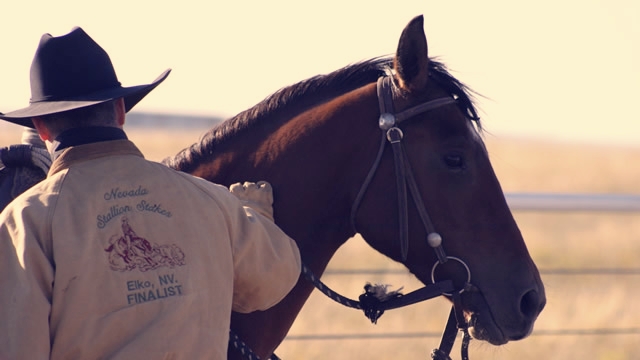Written by Martin Black
This article originally appeared in Eclectic Horseman Issue No.29
Quite often I get around people who make a reference to a “soft feel” with their horse, and I know I am learning more about getting with my horse everyday. But what I see is some people may be getting a soft feel with the reins, but there isn’t much for direction or life to the horse’s feet. Coming from a working and performance background, it was always important to get the job done. You may not always be proud of what it took to get there, but the important thing was you were there when you needed to be.
The horse can do the job we are asking of him and learn to do it in a confident way if we can regulate the amount of panic and confusion. If the horse suffers the experience with a lot of panic or confusion, it is not something he will be looking forward to again. If we can present an experience and at least minimize, if not eliminate, panic and confusion, the horse can experience a job without a bad experience.
This discomfort or mental pressure the horse experiences can be used to motivate him to seek the relief we will offer him as he comes back on track to be with us. It takes pressure for relief to be effective and relief for pressure to be effective. The art of horsemanship is the proper balance of these two factors. Too much pressure creates a nervous horse and too much relief creates a sluggish horse. The proper balance will create a confident horse that will be quiet one minute, and the next minute have all the life needed to accomplish any task.
I believe there can be a lot of value in exposing the horse to the job he needs to do even if he may not be confident or comfortable doing it at first. As time goes along and the job becomes easier and more comfortable, he will start
gaining confidence and the pressure will help him to seek relief. We need to be regulating the amount of pressure we let him experience and then direct him toward some relief. Relief may be letting the horse pause and gather his thoughts after pressuring him to a specific position.
Confidence comes from allowing the horse time to process what created or where the pressure came from, and what action he did to find the relief. The more consistent we can present the pressure and relief, the quicker and easier the horse will find it. If the horse can perceive the pressure as self-inflicted and the relief created by his reaction, this is consistent with the laws of nature.
Once the horse is getting some confidence in what the job is, then we can raise the level of motivation. Again, we need to monitor the level of panic or confusion. As we accelerate the life in the horse, there is a point where we will lose the soft, relaxed, confident feel we had before we motivated the horse.
For example, roping off a colt the first time. We could take two months preparing the horse for all the situations that he may experience maintaining a soft feel through all of it. On the other hand, if we can regulate the trouble we will expose the horse to, and just roll our sleeves up and get into it. We can start giving him some experience doing the job. Then he can learn to appreciate us directing him out of trouble and look for the “soft feel” we offer him when he is on track. This way could get a bit ugly to whatever degree you allow it, but if you can maintain safety for you and your horse, minimize panic and confusion in the heat of battle, the horse can become more useful quicker.
We have bred horses for eons to work. They are genetically designed to work in some function or another, not just be fondled and pampered like some fragile object. Not to say we need to be abusive or insensitive, but these animals are perfectly capable of working in harsher environments than what some people expose them to.
There is a difference between training a horse to do a job, and training a horse while they do a job. My experience has been, the horse has more sense of purpose and can be more content if he is doing a job as he learns.
This article originally appeared in Eclectic Horseman Issue No.29


